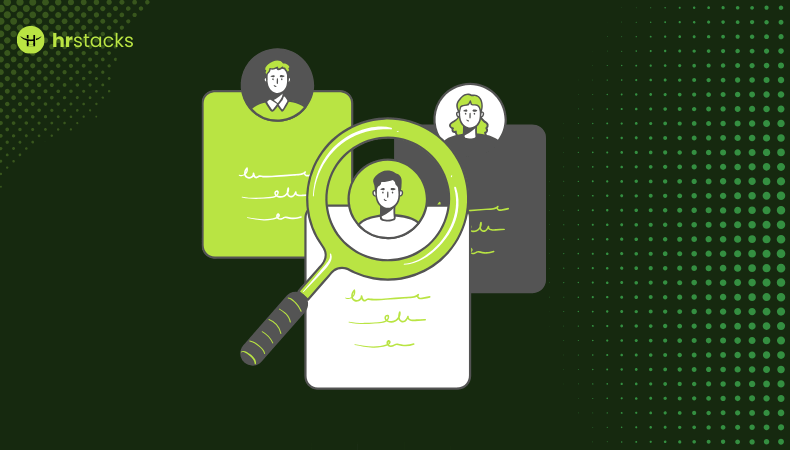Switching EOR providers is a strategic move that can deliver cost savings, enhanced compliance, and better service, but if mishandled, it risks payroll disruptions and employee dissatisfaction.
A successful transition hinges on four pillars: careful provider selection through rigorous due diligence, meticulous contract review and timeline planning, secure data transfer coupled with parallel payroll testing, and transparent, ongoing communication with stakeholders and employees.
By following the seven-step roadmap below, backed by real-world best practices, you’ll minimize risk, ensure continuity of payroll and benefits, and maintain employee trust throughout the change.
Global expansion frequently leads organizations to reassess their EOR partnerships, seeking broader coverage, improved technology platforms, or more competitive pricing.
Yet, shifting EORs involves more than toggling a switch; it requires a structured project approach to safeguard payroll cycles, benefits administration, and legal compliance.
Without a solid plan, companies face data integrity issues, compliance gaps, and employee confusion that can undermine productivity and morale.
This article outlines a step-by-step framework, rooted in expert insights, for HR, finance, legal, and IT teams to execute a seamless EOR transition in 2025 and beyond.
Key Takeaways
- Plan the transition as a structured project to avoid payroll disruptions and compliance risks.
- Define clear goals and evaluate EORs carefully based on reach, compliance, tech, and pricing.
- Review exit clauses and data rights in your current EOR contract before switching.
- Securely transfer data and run parallel payroll tests to ensure accuracy.
- Communicate changes clearly to employees to maintain trust and reduce confusion.
- Audit post-transition performance and document lessons for future improvements.
Clarify Objectives & Choose The Right New EOR
Start by defining your primary goals for switching EORs, whether that’s accelerating global expansion, cutting costs, or improving support quality.
Conducting thorough due diligence based on those objectives ensures you choose a partner whose capabilities align directly with your strategic priorities.
Step 1. Define Your “Why”
First, clearly define your business goals for switching EORs, whether you’re expanding into new markets, seeking better support, or looking to reduce costs.
Deel, for instance, offers quick onboarding and broad market access (150+ countries). The base EOR pricing typically starts around $599 per employee per month, depending on location and services, making it ideal for companies prioritizing speed and simplicity.
Set measurable goals like reducing per-employee fees by 20% or cutting hiring time by 80% to align expectations and guide your decision.
Step 2. Rigorous Due Diligence
Evaluate providers across key dimensions:
- Geographic reach & entity structure: Atlas HXM supports 160+ countries, primarily through its direct entity model, which enhances compliance in most cases.
- Technology compatibility: Ensure seamless integration with your existing HRIS, payroll, and benefits systems. Deel integrates easily with BambooHR and others.
- SLAs: Look for guarantees on payroll accuracy, response time, and compliance updates.
- Data security: Providers like Atlas HXM offer ISO 27001, GDPR, and SOC 2 Type II compliance.
- Transparent pricing: Deel’s published rates reduce financial surprises, while Atlas offers competitive custom quotes.
Back your evaluations with third-party reviews: Deel ranks among top providers on G2 for onboarding ease and platform usability, while Atlas HXM is recognized as a global EOR market leader by Everest Group and G2.
Step 3. Final Selection
Score each vendor based on your criteria and conduct final interviews to assess cultural fit, escalation processes, and account management capabilities. Mauve Group emphasizes clear escalation workflows, which can be formalized during the onboarding process.
Importantly, confirm that your chosen provider owns legal entities in every country where it operates. This direct-entity structure, as seen with Atlas HXM, enhances compliance and audit readiness.
EOR Vendor Evaluation Checklist
| Evaluation Criteria | Example Benchmark |
|---|---|
| Geographic Reach | 100+ countries with direct entity presence preferred |
| Technology Integration | Compatibility with BambooHR, SAP, etc. |
| Compliance Standards | ISO 27001, SOC 2, GDPR compliance |
| SLA Guarantees | Payroll accuracy, 24/7 support, compliance updates |
| Transparent Pricing | Published rates, minimal hidden fees |
| 3rd-Party Reviews | G2, Everest Group recognitions |
Review Current EOR Agreement & Build Your Transition Plan
Conduct a thorough review of your current EOR contract, especially exit clauses, data portability rights, and any costly termination fees.
It’s equally critical to negotiate transition support terms (e.g., data handover, payroll overlap) and map a phased timeline aligned with payroll cycles to prevent disruptions.
Audit Exit & Termination Clauses
Start by reviewing your existing EOR contract in detail. Note important elements like:
- Notice periods and termination rights: Often 30 to 90 days, but some roles may require longer notice or incur early exit fees.
- Refunds and prorated fees: Ensure you won’t overpay for unused services. Negotiate prorated charges if needed.
- Transition assistance: Look for clauses that guarantee handover support (data migration, payroll overlap, training) and confirm the duration allowed for this support.
Establish clear expectations, e.g., a 60-day notice, full data export, and 30 days of vendor support post-termination.
Data Rights & Transferability
Ensure your contract includes specific agreements such as:
- Data export terms: Right to retrieve all personal and payroll data in a usable format (CSV, SQL, etc.) within a set timeframe (commonly 30–60 days).
- Data exit support: A structured plan detailing export method, cost, timeline, and any technical assistance the EOR will provide.
- Post-termination deletion or certification: Ensure the old EOR is contractually obligated to delete or return data and certify compliance.
These components protect against data loss and ensure regulatory compliance during the transition.
Transition Services Clause
If your agreement includes or can include a Transition Services clause, it should:
- Clearly define scope: data migration, payroll overlap, knowledge transfer, and system access.
- Specify duration, e.g., 30-90 days, with conditions for early exit or extension.
- Set deliverables and benchmarks, such as a weekly status report or completion sign‑off criteria.
This provides structured support during the handover and avoids ambiguity.
Build a Transition Timeline
Work with internal stakeholders and your new EOR to create a phased timeline:
| Activity | Timing |
| Submit termination notice | Day 0 |
| Data export begins | Day 1–15 |
| New EOR contract signed | Day 15–20 |
| Employee contract migration | Day 21–35 |
| Parallel payroll run | Day 30–45 |
| Final payroll switch-over | Day 45–60 |
| Post-transition audits | Day 60–75 |
Align this schedule with payroll cycles to prevent gaps or partial payments. Use Gantt charts and assign responsibilities across HR, Finance, IT, Legal, and both EORs.
PTO & Benefit Accrual Management
Plan for Leave carry-over or payouts: Many EORs, like Deel, do not transfer unused PTO across contracts. Consider options such as:
- A grace period for employees to use existing PTO
- Payout for unused leave
- Adjust PTO balances in the new EOR system
This ensures fairness and avoids benefit disputes.
Secure Data Transfer & Privacy Compliance
A secure transition demands that all employee and payroll data be transferred with industry‑standard protections in place.
This includes encrypted transmission via SFTP or TLS/SSL, end‑to‑end encryption at rest and in transit, and rigorous data validation checks such as integrity and completeness verification, all to ensure information remains accurate, confidential, and compliant throughout the handover.
- Centralized documentation: Collect all employment records, such as contracts, payroll, benefits elections, in a secure, centralized repository with version control, audit trails, and detailed access logs.
- Encryption & access control: Encrypt data in transit using TLS 1.2+ and at rest with strong AES-256; enforce role-based access controls and multi-factor authentication.
- Verify completeness: Run data validation scripts and reconciliation audits after export to confirm record integrity, detect discrepancies, and ensure no missing records.
Communicate Clearly With Employees & Stakeholders
Effective communication during an EOR transition ensures employees and stakeholders are informed, confident, and engaged. Begin with a clear, empathic announcement that explains the rationale for the change, anticipated benefits, and a high-level timeline.
Supplement this with regular updates through multiple channels, such as email, town halls, and messaging platforms, tailored by role and location.
Provide FAQs and schedule feedback sessions to address concerns. Keeping communication transparent and relevant reduces uncertainty, builds trust, and encourages collaboration throughout the transition.
Why it matters:
- Builds trust and reduces employee anxiety
- Ensures timely issue identification and resolution
- Encourages active participation and feedback
- Maintains engagement and productivity during change
- Prevents rumors and misinformation from spreading uncontrolled
Execute Offboarding & Onboarding
Offboarding: Ensure Secure, Knowledge-Rich Exits
Begin with a structured offboarding process: collect company assets (devices, badges), revoke system access immediately upon termination, and conduct exit interviews to capture feedback and retain knowledge.
Implement automation where possible, using tools like Okta or BambooHR, to manage access termination, asset recovery, and documentation workflows efficiently and securely.
Onboarding: Seamless Setup With Cultural & Legal Alignment
With your new EOR, execute a proactive onboarding strategy: gather essential contracts and compliance documents, provide a personalized welcome, and align employees on company culture and expectations from day one.
Offer structured orientation and technical training, and maintain ongoing support and feedback channels, which helps integrate new hires quickly and sustainably.
Why This Matters
- Prevents security breaches through timely access revocation
- Retains critical institutional knowledge via structured interviews
- Enhances employee experience with personalized welcome touchpoints
- Speeds integration with consistent onboarding procedures
Parallel Payroll Run & Thorough Auditing
Before fully switching payroll systems, perform at least one or two parallel payroll runs, processing payroll simultaneously on both old and new EOR platforms across identical pay cycles. This allows you to compare outputs, such as gross pay, taxes, deductions, and benefits, with line-by-line precision and identify discrepancies early.
Ensure your QA or sandbox environment mirrors production and is populated with updated payroll data. Verify calculations across scenarios such as base pay, bonuses, variable pay, and statutory deductions.
Discrepancies should be categorized (rounding, mapping errors, missing data) and root causes resolved. Re-run tests until exceptions fall within acceptable tolerances and obtain stakeholder sign-off.
Following the parallel testing phase, conduct a comprehensive payroll audit: sampling records, reconciling with general ledger and bank statements, verifying YTD balances, and confirming compliance with local laws. Regular audits help deter errors, reduce employee dissatisfaction, and strengthen compliance posture moving forward.
Why It Matters:
- Confirms payroll accuracy, avoiding financial and trust issues
- Identifies discrepancies before impacting employee compensation
- Ensures compliance through transparent record comparison and validation
Post-Transition Review & Continuous Improvement
After the transition, evaluate the process comprehensively to ensure long-term effectiveness. Conduct surveys with employees and internal teams within 30-45 days to assess satisfaction, payroll accuracy, benefits continuity, and support responsiveness.
Review performance metrics, such as payroll timeliness, error rates, employee queries, and cost impacts, with your new EOR against initial service-level expectations.
Document lessons learned, including delays, communication gaps, or training deficits. Update internal playbooks based on these insights.
Schedule regular (e.g., quarterly) check-ins with your EOR for ongoing performance reviews, compliance monitoring, and continuous feedback loops that foster improvement.
Why It Matters:
- Identifies operational gaps and drives process refinement.
- Ensures payroll accuracy and compliance are maintained.
- Enhances employee trust and future engagement.
- Preserves support responsiveness and service quality.
- Guides iterative improvements and governance enhancements.
Common Pitfalls & Mitigation Strategies
Transitioning between EOR providers often triggers common pitfalls such as payroll disruptions, compliance gaps, and data migration errors, especially in jurisdictions with complex labor laws and strict data protection requirements.
Smooth Transitions via Proactive Measures

These issues can erode employee trust and expose your organization to legal and financial risk. To mitigate them, implement a rigorous transition plan with parallel payroll runs, encrypted data transfers, defined legal exit strategies, and proactive communication with employees and internal stakeholders.
| Pitfall | Impact | Mitigation |
| Ignoring contract exit clauses | Unexpected fees or extended notice periods | Early legal review of existing EOR agreement |
| Incomplete data transfer | Payroll errors, compliance breaches | Centralized data audit and validation |
| Poor employee communication | Mandatory dry run and reconciliation | Detailed FAQs and ongoing Q&A sessions |
| Skipping parallel payroll testing | Unnoticed calculation discrepancies | Early legal review of the existing EOR agreement |
| One-and-done onboarding | Missing follow-up on benefit enrollments | Post-transition check and feedback loop |
Conclusion
Transitioning from one EOR to another is undeniably complex; it demands strategic planning, rigorous execution, and transparent communication to succeed.
By defining clear objectives tied to measurable goals, such as cost reduction or faster global deployment, you ensure alignment across all stakeholders.
Conducting thorough due diligence on providers, including their geographic reach, entity structure, and compliance track record, empowers informed decision-making.
A detailed timeline, secure data transfers, parallel payroll testing, and structured communication minimize disruption and reinforce business continuity.
Together with mitigation strategies like exit-clause reviews, encrypted handoffs, and employee support plans, this seven-step roadmap positions your cross-functional team to manage the transition with minimal risk, unlocking the full advantages of your new EOR partnership and paving the way for sustained global growth.











